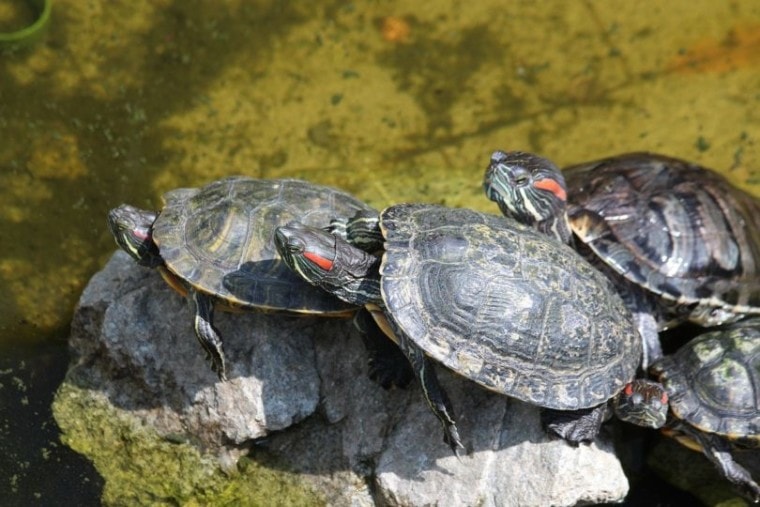
Turtles and tortoises are known for living long lives in the right conditions. The red-eared slider is one of the most common pet turtles, and their lifespan fits the general expectation of longevity for turtles. So, if you have a pet red-eared slider, be prepared to have a pet for a long time. In captivity, their average lifespan tends to be about 20 years with good care and health. In the wild, they can live up to 70 years!
Red-Eared Sliders in the Wild vs. in Captivity
In the wild, red-eared sliders have been reported to live for 60 to 70 years. In fact, the lifespans of these turtles in the wild tend to be longer than those in captivity.
Most red-eared sliders in captivity will live for about 20 years, with some making it to 30. The shorter lives of those in captivity are usually due to poor care and improper conditions. If you want your red-eared slider to have a long and healthy life, you need to make sure you are caring for them properly.
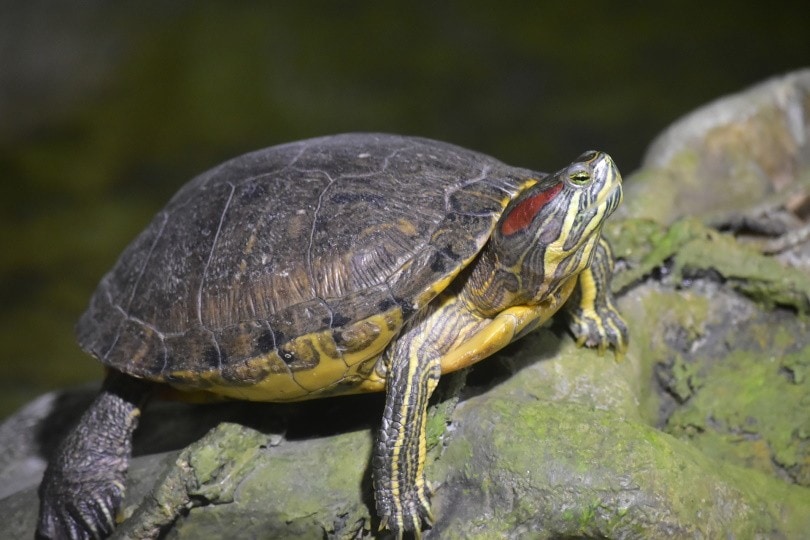
Why Do Some Red-Eared Sliders Live Longer Than Others?
When it comes to caring for your red-eared slider, you have control over many things that can help them live a longer life. Exercise, nutrition, and habitat all impact the overall health of your turtle. There are also health risks that red-eared sliders are susceptible to. Knowing these can help you spot the signs of illness before it becomes a bigger problem.
1. Exercise
It may seem silly to say that your turtle needs exercise, but they do! Red-eared sliders need access to both land and water areas where they can move freely.
The land area can be made of sand or gravel. It should also give them easy access to fresh, clean water. Having both gives your turtle plenty of room to exercise and move around. This gives them the mental and physical stimulation that they need for optimal health.
2. Nutrition
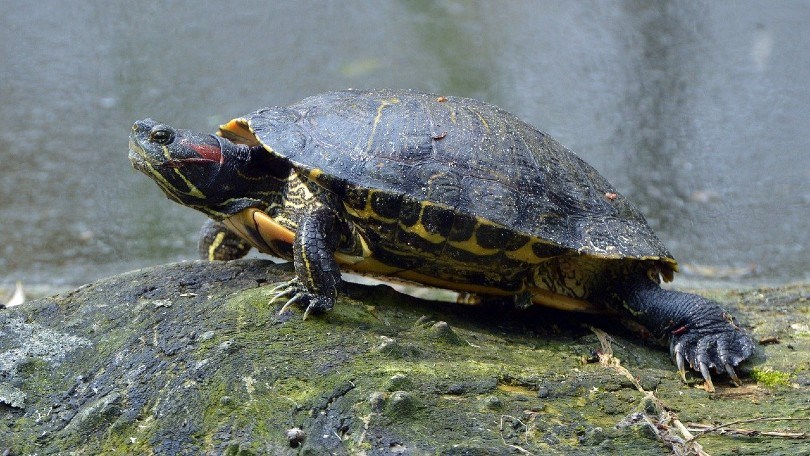
Proper nutrition is also a vital factor in a turtle’s lifespan. Veterinarians recommend that pet turtles be fed a combination of turtle food and leafy greens, such as romaine lettuce, kale, spinach, and other greens. Red-eared sliders should also get occasional treats that include:
Young sliders should be fed every day, while adult sliders should be fed every 2 to 3 days. Red-eared sliders should not be fed fireflies, as these contain a toxin that is harmful to turtles. Onions, chocolate, and avocado are also foods that you should never feed your turtle.
3. Habitat
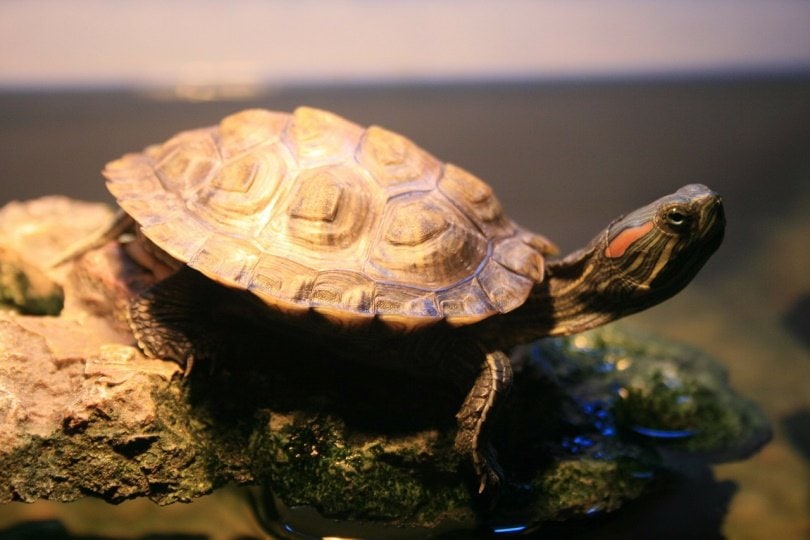
Red-eared sliders can grow to be anywhere from 5 to 9 inches for a male and 12 to 13 inches for a female. Therefore, they need a fairly large tank to move around in. It is recommended that at least a 50-gallon tank is used for one adult slider.
In this tank, they need both land and water space. The minimum water depth in the aquarium should be between 10 and 30 inches, depending on the size of the turtle. A good rule of thumb is to have the water depth be at least twice the shell length. The temperature should be between 75 and 80 degrees Fahrenheit. The water also needs to be kept clean, which is no small task with a red-eared slider. They use their water to eat and as a toilet, so frequent water changes are a must.
The habitat also needs to be kept at the proper basking temperature during the day. For a red-eared slider, this is 85 to 95 degrees Fahrenheit. At night, the temperature should be about 5 to 10 degrees cooler. This can usually be achieved by turning off the heat lamp overnight.
Lighting is the other key factor for a healthy turtle habitat. You need both UVA and UVB light for your turtles. UVB light is critical to their metabolic process and calcium absorption. Without it, they can suffer from fatal degenerative bone and shell diseases.
4. Health
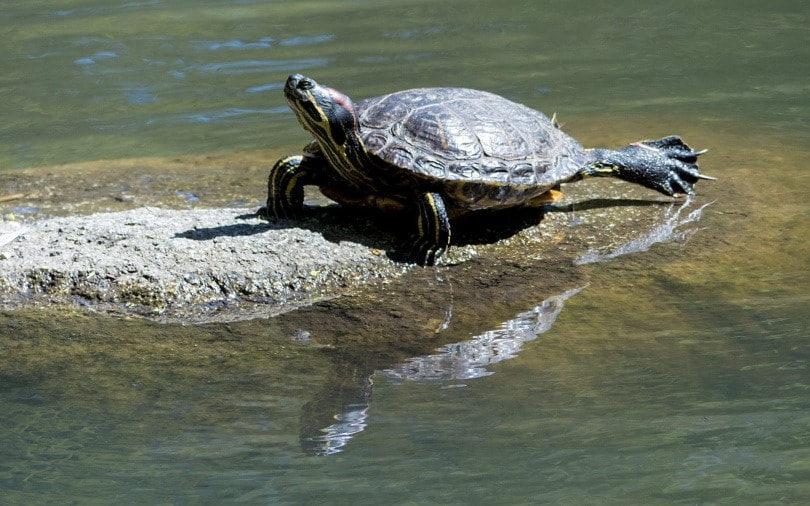
Like all pets, red-eared sliders should have regular veterinary check-ups. Your veterinarian can check your turtle for injuries and illness. Common illnesses in red-eared sliders include respiratory infections and shell rot.
Respiratory infections can usually be detected by looking at your turtle’s eyes. The eyes will appear swollen when your turtle has a respiratory problem. A runny nose, loss of appetite, or inactivity can also indicate a respiratory infection. These are usually treated with antibiotics.
Shell rot is an infection of the turtle’s shell. It can be caused by fungus or bacteria in your turtle’s environment. The infection usually shows as a light spot on the shell. It can spread to other parts of the body if not treated.
- See also: Do Red-Eared Slider Turtles Bite People?
Final Thoughts
Red-eared sliders can live a long life if they are properly cared for. Although those in captivity don’t quite reach the lengthy lifespans of wild sliders, 20 to 30 years is a reasonable expectation for a captive one. Maintaining a healthy habitat, feeding them well, and monitoring health conditions are essential to turtle longevity.
- Next on your reading list: How Long Do Turtles Live? Average Lifespan, Data & Care
Featured Image Credit: Pixabay









